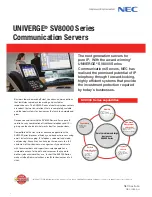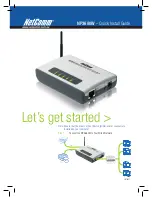
14
R/Evolution 2000 Series Troubleshooting Guide • May 2008
Drive Modules
The drive module has a front bezel with a latch that is used to insert or remove the
drive module. When any component of a drive module fails, the entire module is
replaced. Each drive module is inserted into a drive slot (or bay) in an enclosure.
The following figure shows the numbering of drive slots in an enclosure.
Figure 1-2
Drive Slot Numbers
A drive is identified by the numbers of the enclosure and slot that the drive is in.
For example, the last drive in the controller enclosure is identified as 0.11 (EID 0,
slot 11). Drive modules are slot-independent, that is, the drives can be moved to any
slot with the power off. Once power is applied, the RAID controllers use the
metadata held on each disk to locate each member of a virtual disk.
Disk Drives
Each RAID controller has single-port access from the local SAS expander to
internal and drive enclosure drives. Alternate path, dual-port access to all internal
drives is accomplished through the expander inter-controller wide lane connection.
Dual-port access assumes the presence of both controller modules. In a failed over
configuration, where the partner controller module is down or removed, only single-
port access to the drives exists.
The storage system can include either or both SAS or SATA II drives. A drive can
be interchanged with a qualified equivalent drive. In addition, each enclosure can be
populated with disks of various capacities. To ensure the full use of a disk’s
capacity, construct all virtual disks with disks of the same capacity.
Summary of Contents for 2000 Series
Page 1: ...2000 Series Troubleshooting Guide P N 83 00004287 12 Revision A May 2008 ...
Page 18: ...18 R Evolution 2000 Series Troubleshooting Guide May 2008 ...
Page 34: ...34 R Evolution 2000 Series Troubleshooting Guide May 2008 ...
Page 64: ...64 R Evolution 2000 Series Troubleshooting Guide May 2008 ...
Page 78: ...78 R Evolution 2000 Series Troubleshooting Guide May 2008 ...















































